This review was provided for free, but Cit-E-Cycles supplied a temporary demo bike for me to test. My goal is to be transparent and unbiased with you, this video and writeup are not meant to be an endorsement of Kona products. I welcome your corrections, additions, and feedback in the comments below, and the Kona electric bike forums.
Observations:
- The Dew-E and Dew-E DL are based off of the long-running Dew model, an analog (human powered) bicycle that has been popular with commuters and city cyclists for years. Kona said that they basically added a drive system to that exact bike, striving to maintain the same beloved geometry and sizing options.
- With two bottle cage mounts, bosses for adding front and rear racks, high-quality integrated lights, and aluminum alloy fenders, this ebike is an excellent platform for building a commuter or using for daily rides. No suspension, but the wider 1.75″ tires and vibration dampening carbon fiber fork offer some comfort. You could get a 31.6mm suspension seat post and suspension stem to reduce vibration without adding too much weight (compared to a full suspension fork). The narrower handlebar is going to be easy to fit through doors and between cars and other crowded cycling areas that you might encounter in a city environment.
Pros:
- The bike is stiff, in a good way. It’s light and responsive because of the geometry and carbon fiber fork vs. a suspension fork. When I started and accelerated on pavement, it reminded me of a little sports. The Shimano motor is surprisingly powerful and zippy, it responds very quickly.
- Kona used butted tubing for the frame, meaning that the wall thickness increases towards the ends for increased strength. The wall thickness decreases towards the middle of tubes to help keep the bike weight down.
- Beautiful aesthetic here. While the bike only comes in one color (one for the Dew-E DL, and a different one for the standard Dew-E with external battery pack), the accents on the fork, frame, and saddle all match. I like that they chose black fenders, hubs, spokes, rims, seat post, etc. etc. for a clean look. Notice that the wires are all hidden, being internally routed through the frame.
- Excellent weight distribution here with the motor and battery both low and center on the frame. This improves stability and handling.
- Since the battery mounts up inside the downtube, they had room to add two bottle cage mounts on top of the downtube and on the seat tube. I also appreciate the four bolts on the fork for adding pannier racks, and additional bolts on the seat stay for adding a rear rack.
- To me, this ebike frame is more “open source” than many others. Since Kona added all of the bosses and mounting points and went with a traditional diamond (high-step) frame, you can add a triangle frame bag like this and a sturdy rear rack to use with a child seat, trunk bag, or panniers. The fork bosses are very unique and significantly expand the carrying potential of the bike.
- The wheels attach to the bike using a 6mm Allen hex key to unscrew the thru-axles, which reduces your risk of theft at a bike rack when compared to quick release. These 12mm thru-axles provide more stiffness and overall strength than a traditional 9mm axle with a quick release skewer. Same goes for the Shimano hollow-tech spindle at the bottom bracket. I think these two upgrades are part of what makes the bike feel tight and comfortable at speed.
- To remove the battery or adjust the seat post clamp collar, you just need a 4mm Allen hex key. In short, you can do a lot with this ebike by carrying a 6mm and 4mm key with you. There’s no quick release anywhere, so it’s well suited to an urban environment where people might be tempted to steal your seat post and saddle or something. The drawback is that the battery does not use an actual key to lock to the bike, and may be vulnerable to tampering if someone else has a 4mm key and knows that the battery can be released this way.
- Even though I found it somewhat difficult to reach and release the downtube battery pack, I do appreciate that it’s removable for storing and charging inside. This is great for commuters and those who don’t have a a protected space to store the bike inside at home… you can bring the battery inside to protect from extreme heat and cold while charging.
- I also appreciate that the battery has a two-step release… so you can unlock it, then it clicks to a holding position before completely coming out. This ensures that you’re less likely to drop it, you have to use a finger to press a tab at the top to fully release it, very similar to the Bosch PowerTube battery packs.
- I love that this electric bicycle comes in four frame sizes! This allows for a better fit and ride experience. I was on the large frame, and it fit a bit small (I’m 5’9″ weighing 135lbs and would consider the XL). Normally I’m between the medium and large size.
- The metallic green paint, black accents, and vintage looking tan tires come off well. Even though the tires don’t have reflective striping on the sides, the tan should reflect more than a black tire, and the headlight has side cutouts so you’ll be visible from more angles at night. Both of the lights are nice… even if the rear light isn’t super big and doesn’t have a large reflective surface like most other lights I see.
- Both lights run off of the main rechargeable ebike battery and are securely attached to the frame, the headlight has a sturdy metal housing. I like where the headlight is mounted, on the arch of the fork, because it points where you steer and doesn’t create clutter up on the handlebar. I also appreciate the top-cut light beam that is designed to aim down and out vs. up into the eyes of oncoming cyclists and automobiles.
- The fenders are made from aluminum alloy, so they won’t rattle as much as plastic and won’t rust the way that steel could when scratched. They are well supported by the stays and have clean clamps that eliminate sharp pokey points I observed on an older model of the Dew-E. Measuring 55.5mm wide, the fenders should keep you pretty dry, and the plastic chainring protector should keep your right pant leg from getting greasy or snagged ;)
- I was very impressed with the 10-speed drivetrain and super wide 11 to 46 tooth cassette! That’s huge, normally I just see 11 to 32 or 36. The larger 46t (low gear) ring offers excellent starting and climbing power. The combination of mid-drive plus wide cassette means you can operate the bike very efficiently and get excellent range when riding thoughtfully. The smooth tires, rigid fork, and relatively lightweight design all add to this efficiency.
- This is a little thing, but the grips on this ebike are locking! That means they won’t spin or slip if you really bear down. I also love the two-way trigger shifters that were chosen, this allows you to shift into higher gears by pressing with your thumb or pulling with your index finger… and the low gear lever allows for three shifts with an extended shift, perfect for downshifting quickly when approaching a steep hill.
- The tires that Kona chose for the Dew-E DL are smooth like a road bike, but wide for stability and comfort. The wheel size is 650b vs. 700c (the rim is not as tall but the tires are taller, so the effective diameter of the wheel is similar which offers a low attack angle to smooth over cracks and bums). To add even more comfort, consider swapping the rigid seat post with a 31.6mm suspension seat post like one of these.
- The Dew-E DL is the more expensive version of the Dew-E electric bicycles, but both utilize the same Shimano E6100 mid-drive motor and same 504 watt hour capacity battery packs. The big aesthetic difference is the internal battery pack design here that puts weight lower and adds space for a second bottle cage. Other differences include the carbon fiber fork upgrade and 10 speed Shimano Deore vs. Shimano Acera 9 speed on the standard Dew-E. The lights also seem like an upgrade here, but the Dew-E is a pretty good option if you want a battery that’s securely locked to the frame with a key and easier to access.
- This is a minor thing, but they chose a really solid kickstand and mounted it securely with a 40mm standard bolt pattern in a rear position that won’t cause pedal lock. The stand offers adjustable length and a large base that won’t sink into the sand or mud as easily. Same great job with the pedals, they could have used narrow metal cage pedals, but these larger nylon pedals offer more stability, won’t get bent or become as sharp as metal (or rust), and they offer great traction.
- The two-finger Shimano brake levers don’t require much hand strength (since they are hydraulic), and both offer adjustable reach for different hand sizes. Hydraulic disc brakes tend to require less maintenance and offer even stopping power (front vs. back wheel, often rear wheel takes more effort for mechanical brakes due to longer cable length and associated friction). Basic 160mm rotor size here is suitable for neighborhood, cruising, and light gravel paths in my opinion.
- I appreciate how zippy and powerful the motor is, despite being so compact and light weight. It can support pedaling up to 130 RPM, so you won’t lose motor support by pedaling fast as you shift to lower geas when climbing.
- The motor is excellent for cruising and city riding! It offers satisfying dynamic support based on pedal speed, pedal torque, and bicycle speed (measuring these signals and responding almost instantly). This particular motor is very lightweight at just 6.35lbs and compact with a standard 168mm Q-Factor (distance between the outside of the crank arms) while other motors weigh more and are wider. Apparently it’s 20% more energy efficient than the previous generation E6000, and is designed to be highly water resistant (along with the battery). It offers between 250 watts and 500 watts of power output.
- I appreciate how compact and lightweight (just 1.4 pounds) the included charger is! This thing is pretty cute, and the wall-plug cord can be removed to reduce the length of the charger if you’re stowing it in a pannier or backpack. This is MUCH better than the older larger charger from Shimano, but it charges 55% slower as well. The battery can be charged on or off the bike frame, but requires an adapter endpiece to do so (don’t lose that piece!)
- For me, having an e-bike that is lightweight makes it much more fun because it’s easier to lift onto bike racks or up stairs. It’s easier to control, and more fun to ride if I turn off assist or run out of battery charge. This ebike offers incredibly good range because of its efficient motor, but it’s still nice knowing it’s not that bad to pedal normally. It weighs just 42.4lbs including the fenders and lights! With the battery off, which is recommended for lifting and transporting, it weighs just 35.7lbs.
- I like the minimalist branding on the frame, saddle, and fork but I appreciate extra labels on the stem that show the length and angle. I also like the rubber band pieces on the handlebar to organize the wires and cables.
- The bike uses high-quality headset and bottom bracket parts that I believe are sealed against water, which means you won’t get the same rust, squeaking, creaking, and friction over time as lower quality ebikes. Given the fenders and lights here, it’s a bike that I expect people would ride in the rain or through puddles, so great that the rest of the hardware is stainless and high quality in general.
- I like that the display has a menu system with lots of options (just hold the little circle button below the display panel to get into settings). One of the options is to turn off the electronic beeping noise in case that annoys you… but it can actually be useful since the display is kind of small and you might want to keep your eyes on the road ;)
- I also like that the display has many readouts including pedal RPM and dynamic range estimate… it helps to make up for its smaller size and basic battery charge level infographic.
- My understanding is that Kona launched in the mid-1980’s and probably had its first bicycles in 1988 or 1989. They’ve been around for a long time, and their staff was very easy to reach and very friendly even in 2021. Apparently it’s still owned 50/50 by the two original founders and the team has grown to around 75 people. They launched their first three ebikes in 2010, so I feel like they are very committed to the space and stable compared to some newer less proven brands.
- Kona launched in Kerrisdale British Columbia (near Vancouver), so if you’re a Canadian or live in the Pacific Northwest like Washington State, these guys are local. They feel authentic to me.
Cons:
- This ebike is fairly expensive; it’s comparable to other major brands that are sold through shops. The custom frame build, premium drivetrain, high quality name brand motor, and four frame sizes all add to the price.
- It’s only available in high-step, no mixte mid-step or step-thru options right now. If you’re looking for a more approachable model from Kona, check out the Ecoco.
- Part of the Dew-E DL appeal is that the frame is stiff, light, and fast… but this means it can be less comfortable when the going gets rough. The carbon fiber fork helps to reduce vibration, and you can lower the tire pressure to help absorb bumps. Consider purchasing a 31.6mm suspension seatpost as a lightweight way of reducing stress on your back and shoulders if you’re sensitive.
- The bike only comes in one color, but at least it’s fairly neutral and has clean matching components (mostly in black). Consider the standard Dew-E if you want a slightly different color (metallic blue) and don’t mind an external battery and loss of one bottle cage interface on the downtube.
- I was really surprised that Atran Velo kickstand chosen for this ebike requires a 4mm star key vs. a standard Allen key hex wrench? I feel like this will frustrate people who don’t have the correct tool.
- Unlike most of the other Kona models (and most ebikes I see from other brands), the battery is secured to the frame using a standard 4mm Allen key hex wrench. This means that it could be stolen more easily, and that would bother me if I was parking the bike outside in a city regularly. I also found it difficult to reach and remove when I did want to take it off the bike for inspection and charging.
- The charger that comes with the bike is fairly compact and lightweight, I love that you can unplug the wall side to reduce it’s length… but I really dislike that there’s an adapter plug for charging the battery directly. This plug piece could be easily lost and it adds weight, size, and wasted material compared to using a single plug interface. I feel like Shimano could do better than this, they are the only major brand I ave seen with this sort of setup lately.
- If you decide to leave the battery on the bike when charging, you’ll have to reach down to plug in at the very base of the seat tube and downtube. The port faces up, but has a little plastic cover to keep dust and water out. When plugging in, the cord will protrude to the left side of the bike and may get snagged by the pedal. I wish that the charging port was up high on the right side of the bike… the bike leans towards the left and reaching down each time to plug in just felt inconvenient and a bit awkward because of the plug design and how the cord comes out of the plug. I feel like Bosch, Brose, and Yamaha have designed better solutions.
- The power button is mounted on the top tube, built into the metal frame! This required special engineering from Kona and I don’t feel that the location is especially convenient. Why not put a power button and set button on the control pad mounted near the left grip? This would be easier to reach and probably more reliable than spreading the buttons out between the control pad, frame, and display panel. The set button on the display is super small and cannot be reached while hands are on the grips… it feels like a missed opportunity and is another decision that I’m not happy with from Shimano.
- The display panel is super small and not removable. If you cannot read the display, at least there is a beep sound that is produced each time a button is pressed to change assist levels… but that can get annoying. You can disable the beep and invert the display readout (black and white), which is kind of neat. I believe that there is also a Shimano E-Tube app with some limited features to experiment with as well, but there’s no USB charging port for your phone here, so running the app frequently might not be advisable while riding.
- I was surprised that there wasn’t a dedicated lights button, or a key shortcut (like holding up) to activate them. Instead, you need to hold the little circle button on the base of the display to enter the settings menu and then enable or disable the lights. I believe that this is required for each ride… it’s a lot less convenient than some competing products, many of which now have auto light sensors that activate based on the brightness outside.
- For me, the price difference between the standard Dew-E to the DL seems a bit steep. It’s about $1k more and the major differences appear to be how the batter is mounted inside the frame, a carbon fiber fork vs. aluminum, and one extra gear in the drivetrain. You get the same motor and same battery capacity.
- While you can pedal backwards on this ebike, the chain does not cycle backwards. This is something that can be useful if you’re performing drivetrain maintenance… and it’s not a huge deal. However, the Shimano E6100 doesn’t introduce much friction when cycling backwards, so the pedal could spin fast and hit your shin if you slip off accidentally. Other mid-drives produce more friction or do cycle backwards, so I think Shimano could improve here.
- This is a minor thing, but Kona is using the older rear wheel speed sensor and spoke magnet on this bike. Bosch has a new design that positions these near the disc brake caliper and rotor mount so your spoke won’t get loose and the magnet won’t get bumped out of position as easily
- This is a very minor thing, but the chainring only has a one-sided guard vs. a double-sided guide or even a guide plus a chain cover. This isn’t a mountain bike that could encounter lots of big motion and easily drop the chain, so it’s only a minor consideration… but I also didn’t see a clear sticker slap guard or neoprene cover, so if the chain does hit the right chainstay, it could chip the paint over time.
- I think this ebike would be a great candidate for Class 3 (faster top speed of 45mph 28mph) because it’s so sporty, sturdy (with the 12mm thru-axles), and designed for active riders. That would make commuting faster and allow riders to command more respect from automobiles. It’s not a standard that’s available in Canada, but Kona appears to do a lot of business in the US now (possibly more than half) so it’s worth considering.
Useful Resources:
- Official KONA website
- Kona ebike shop directory to find a Kona dealer near you for fitting and test rides

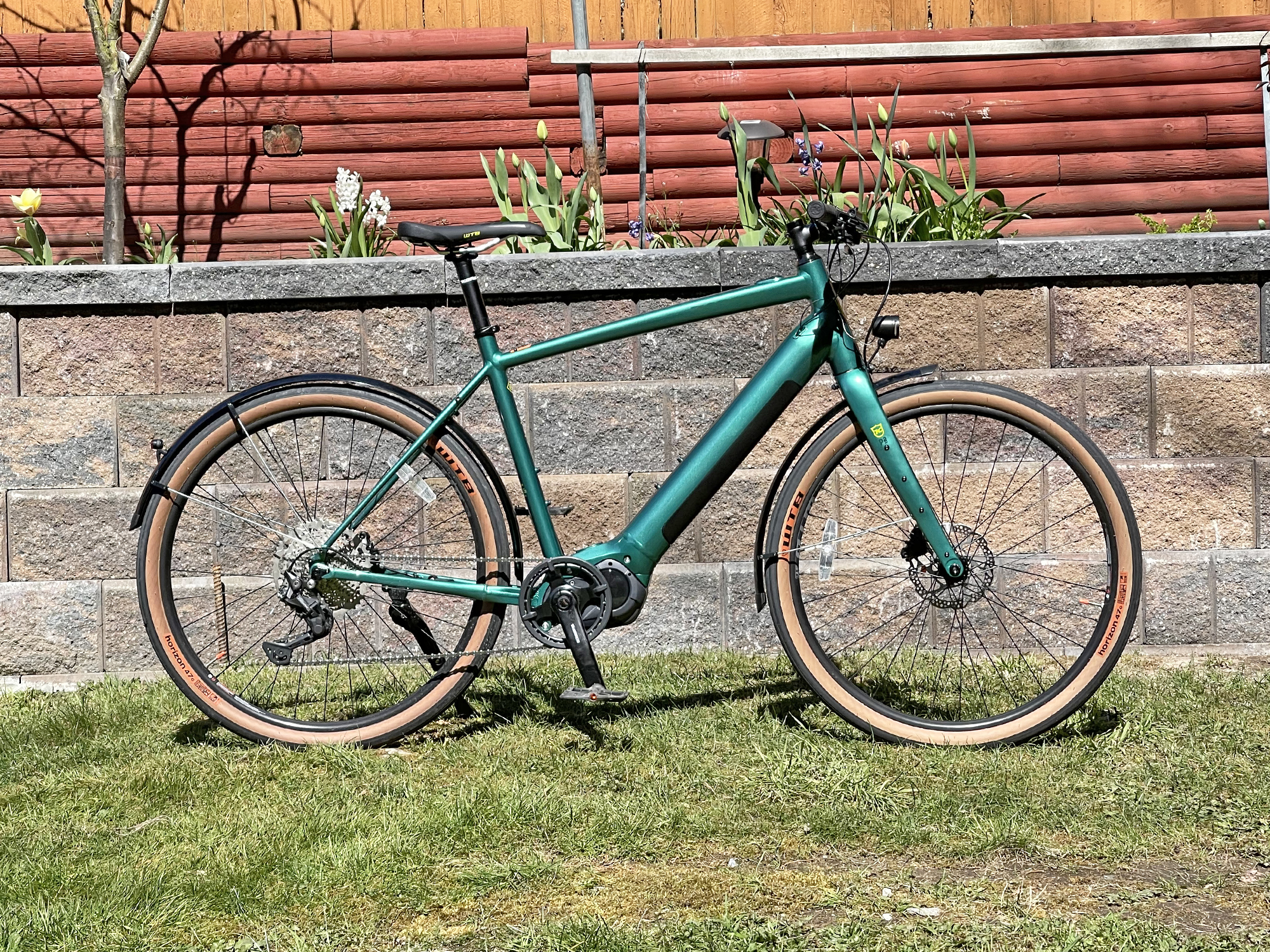


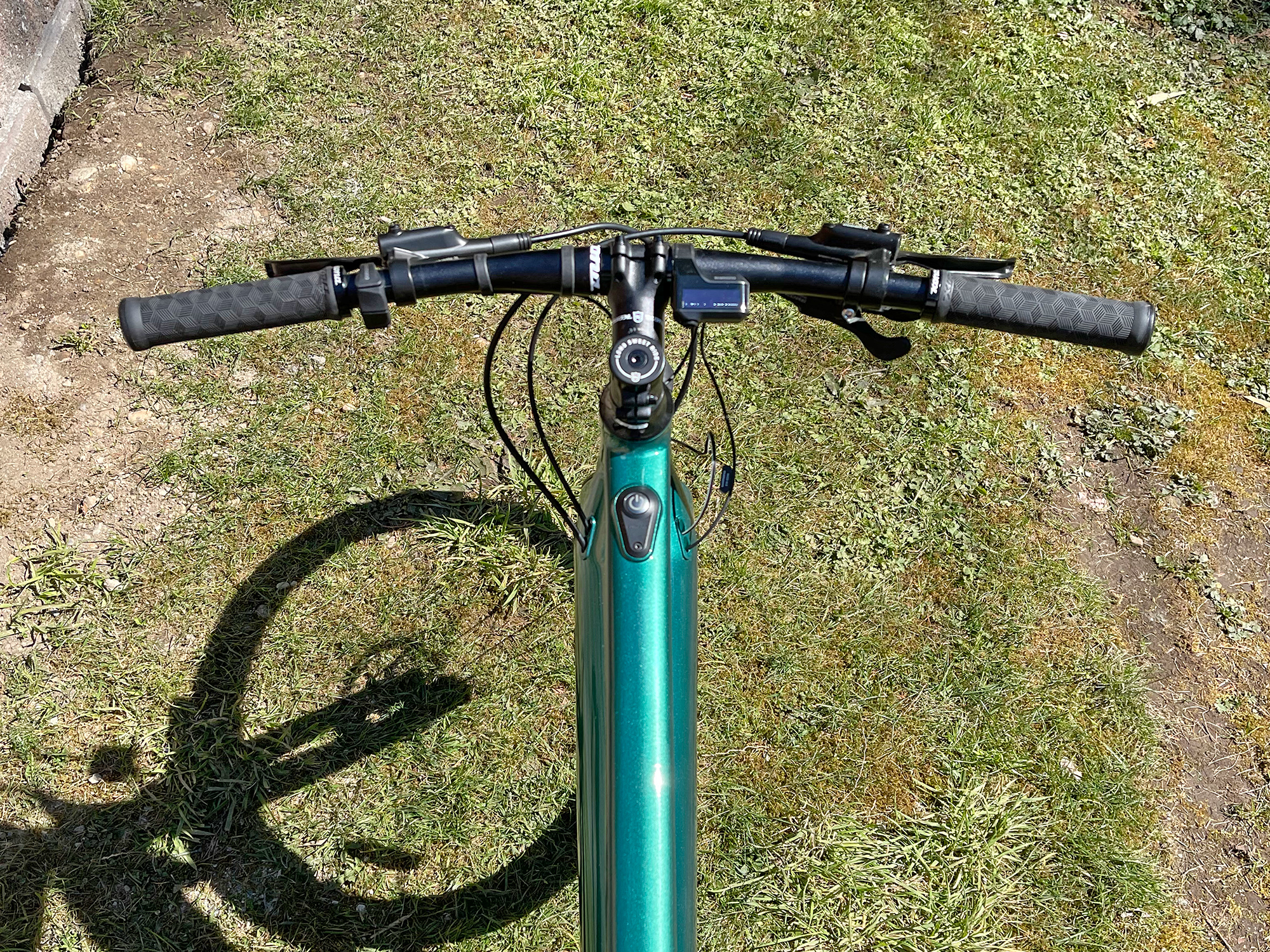
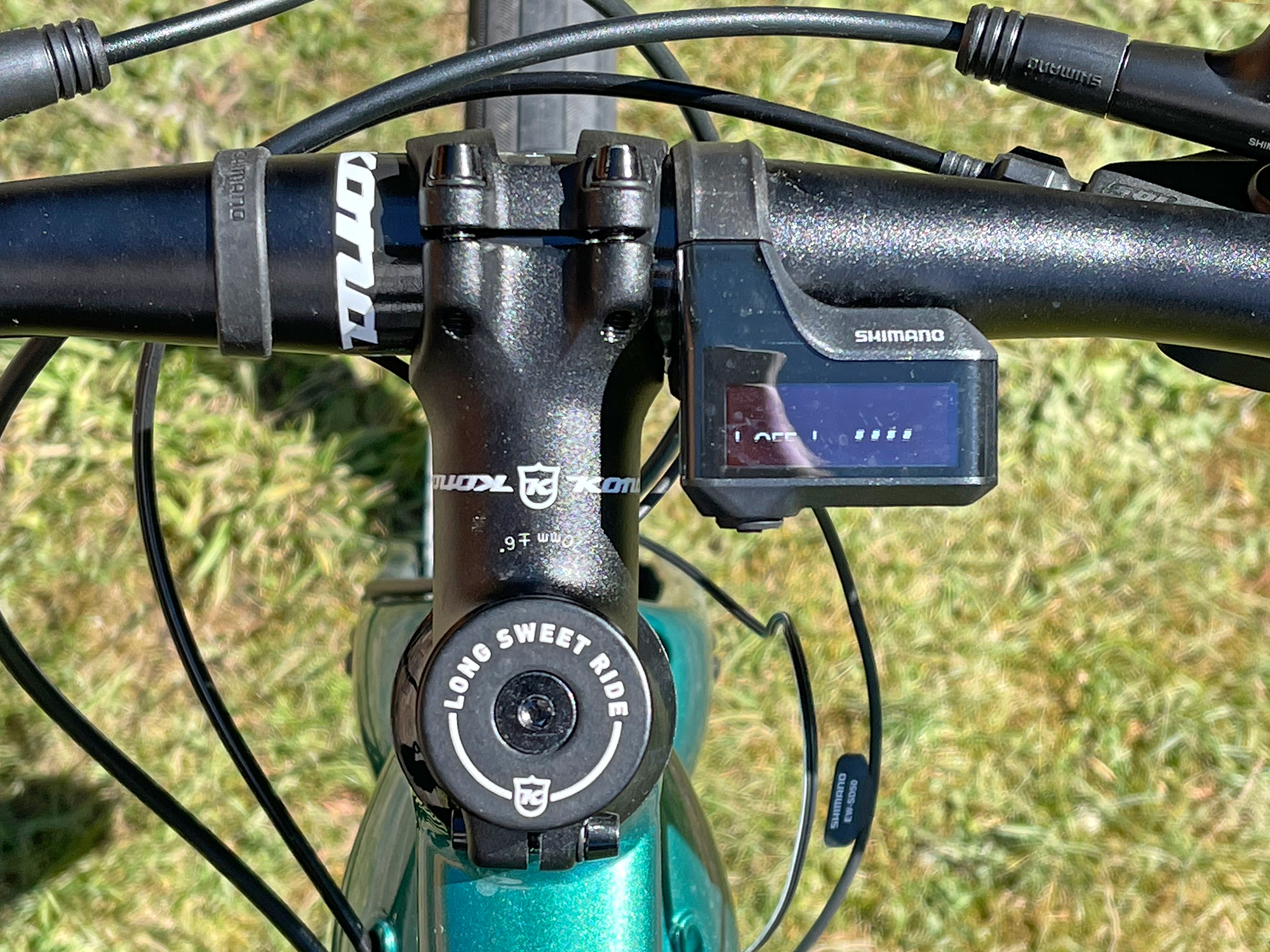
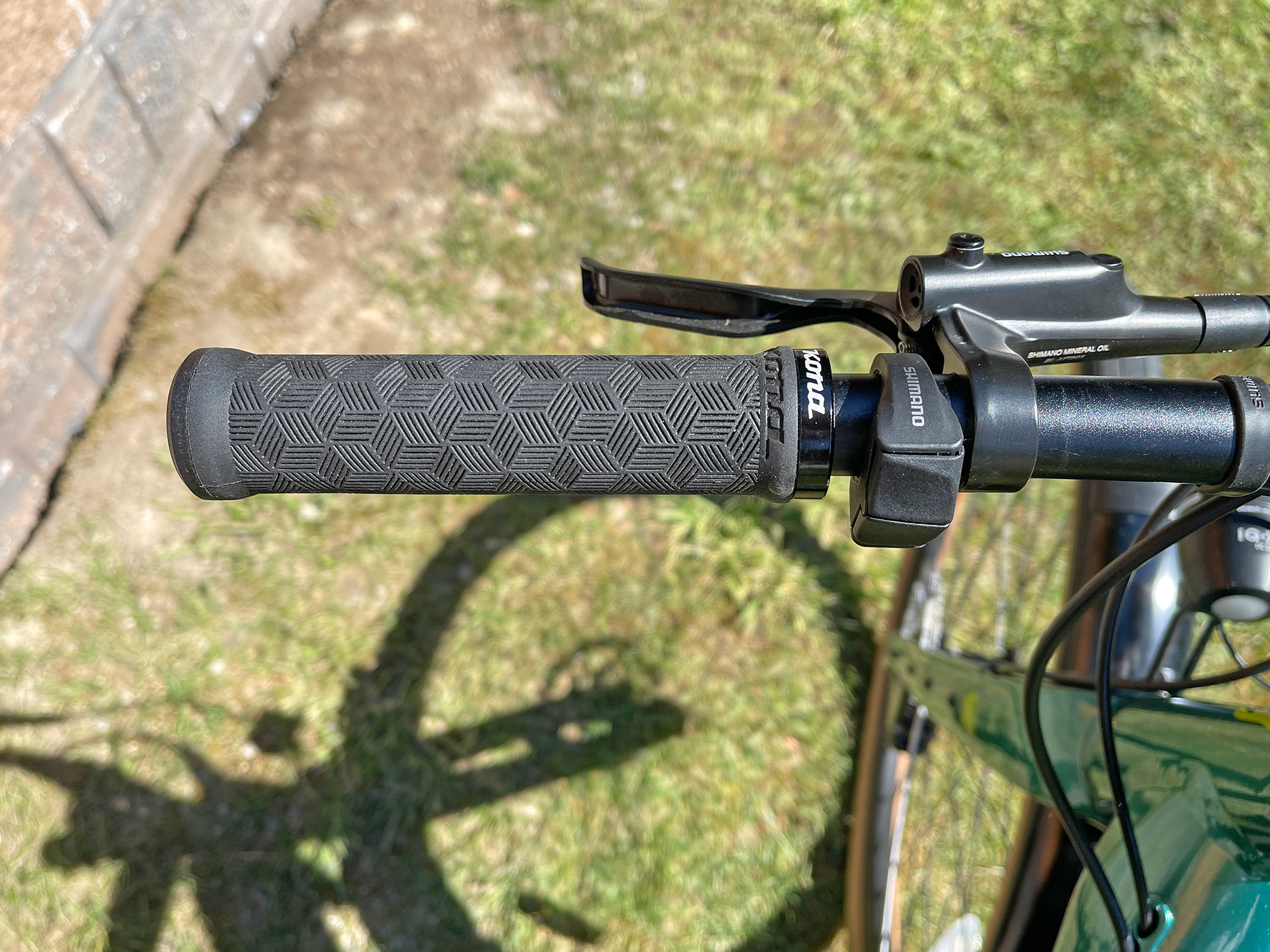
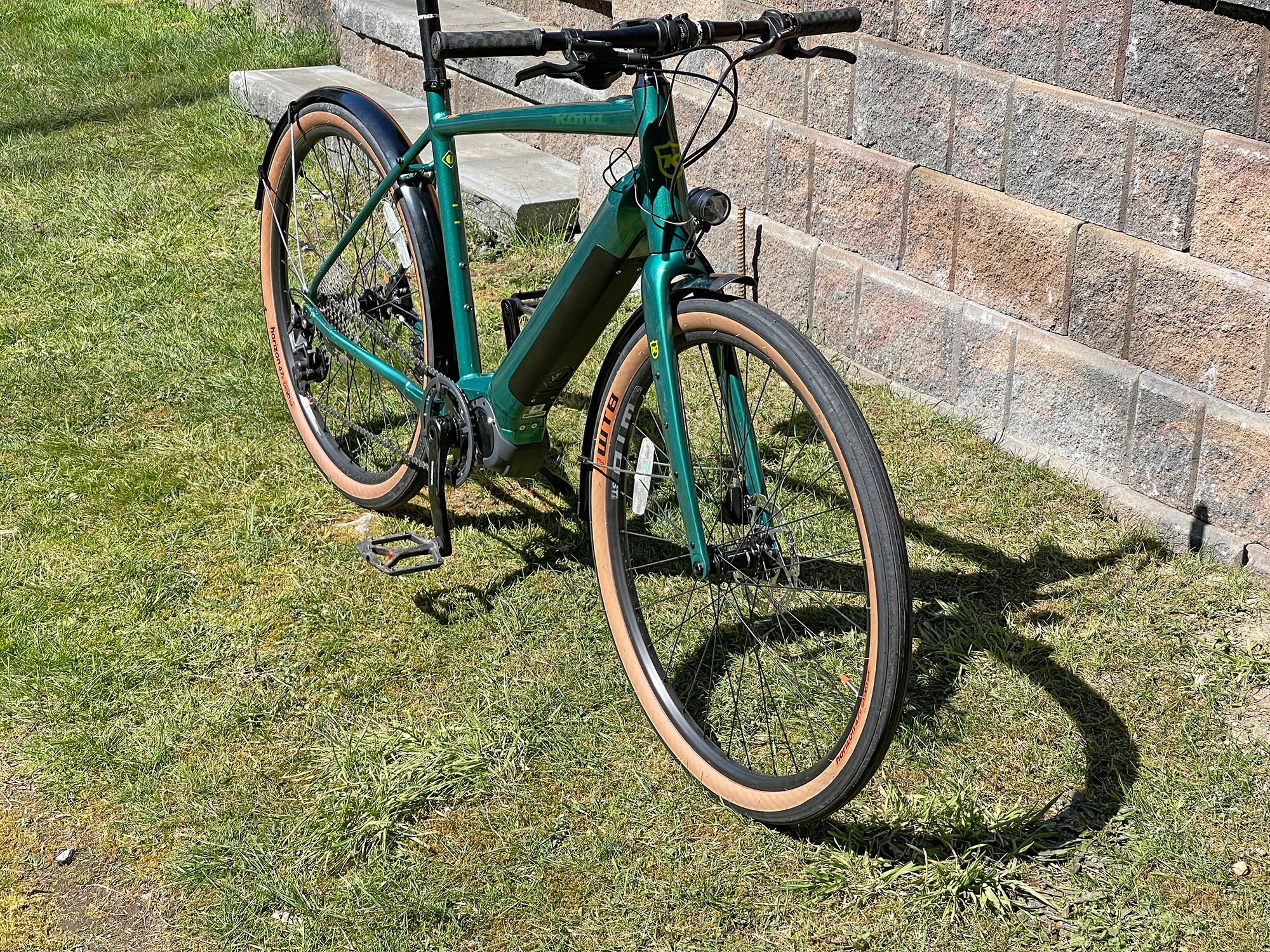
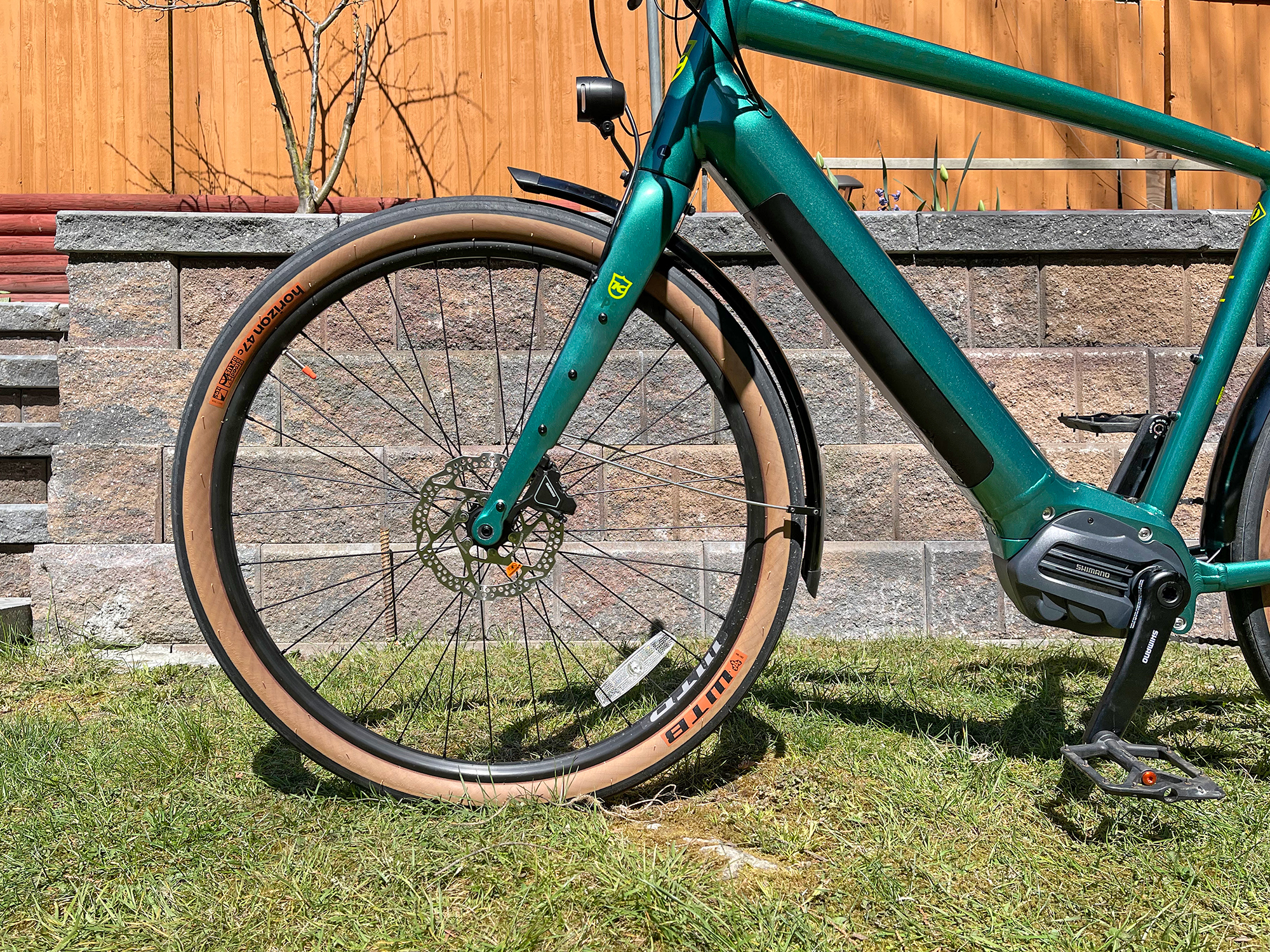
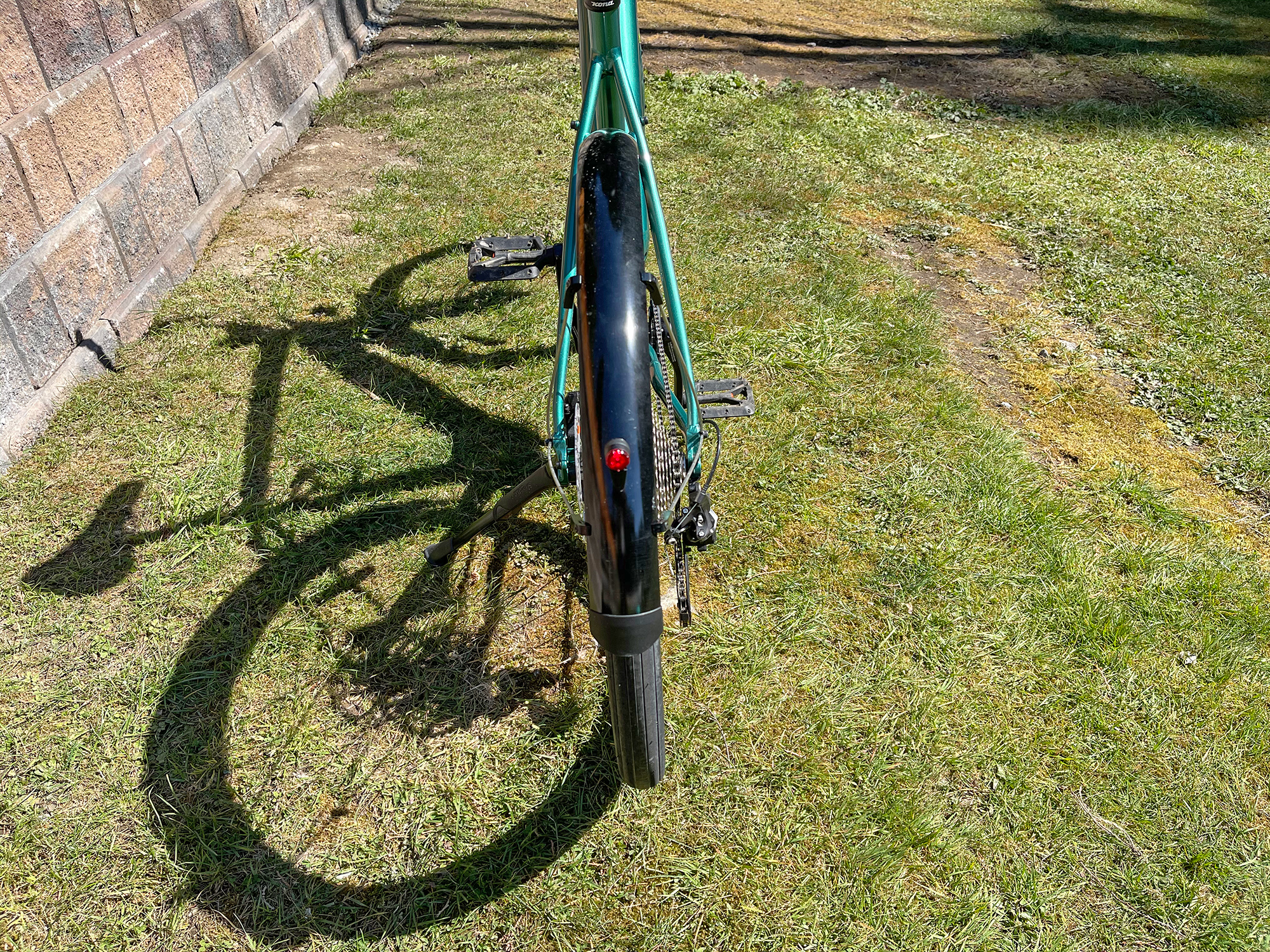
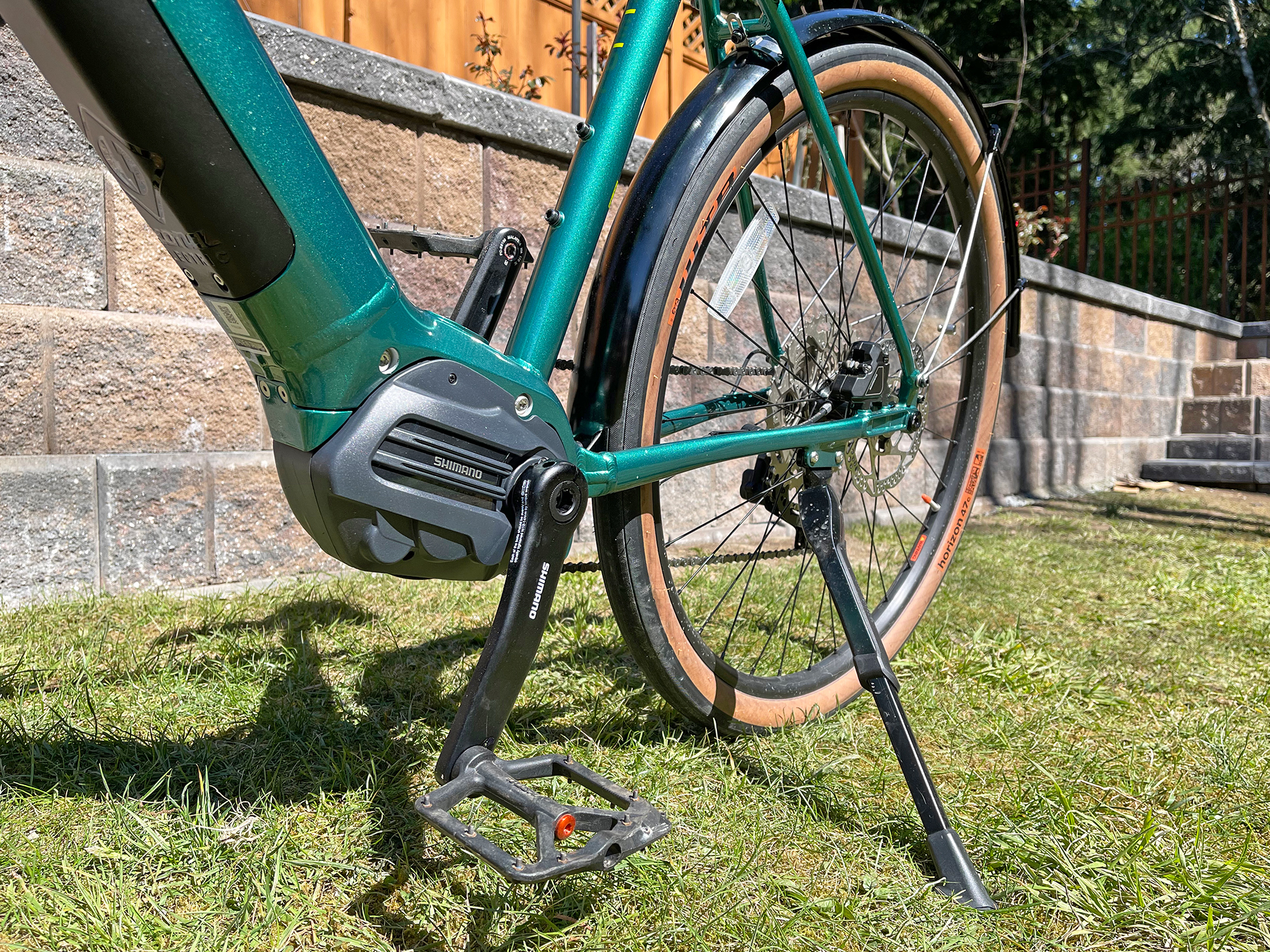
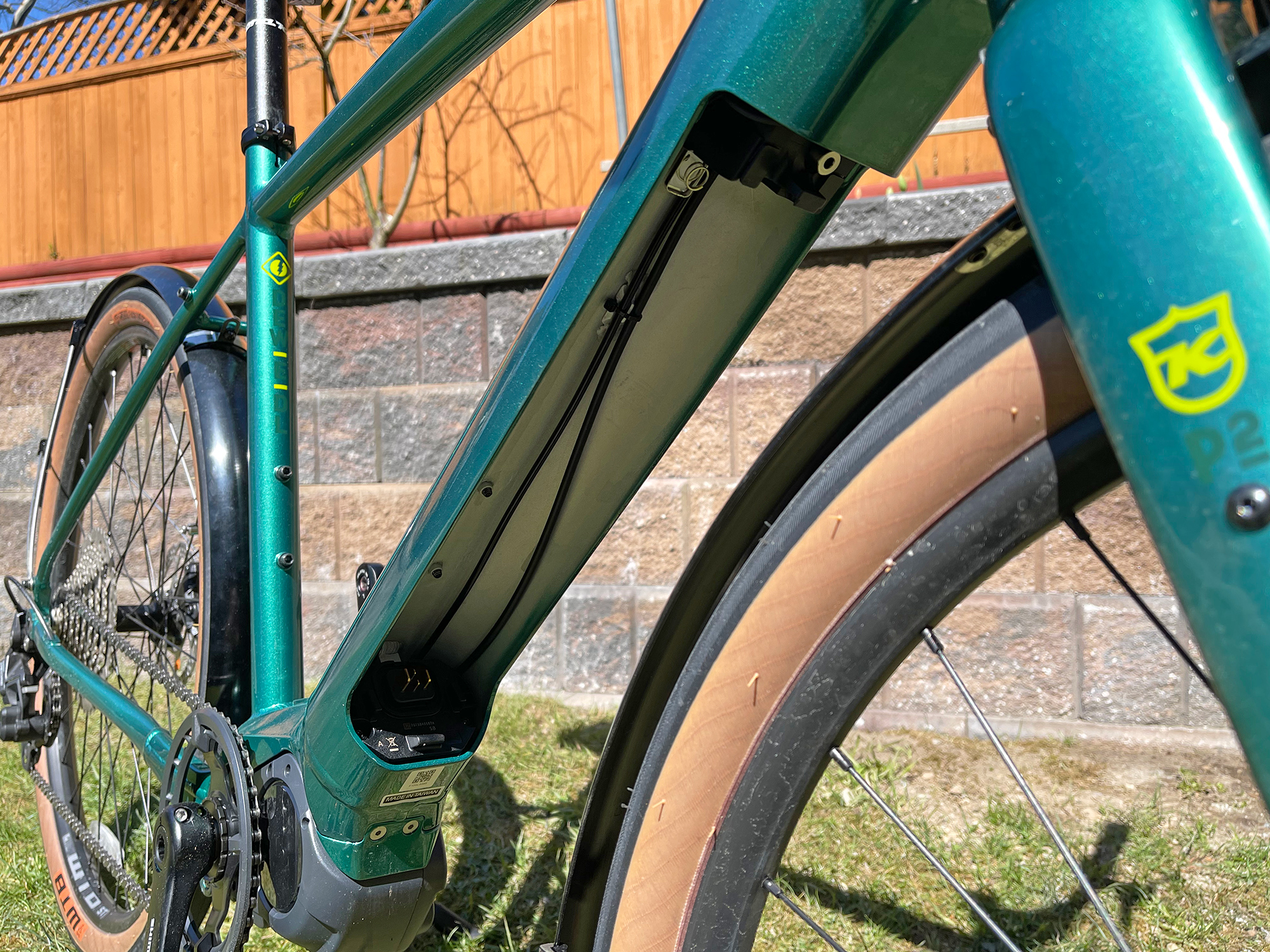
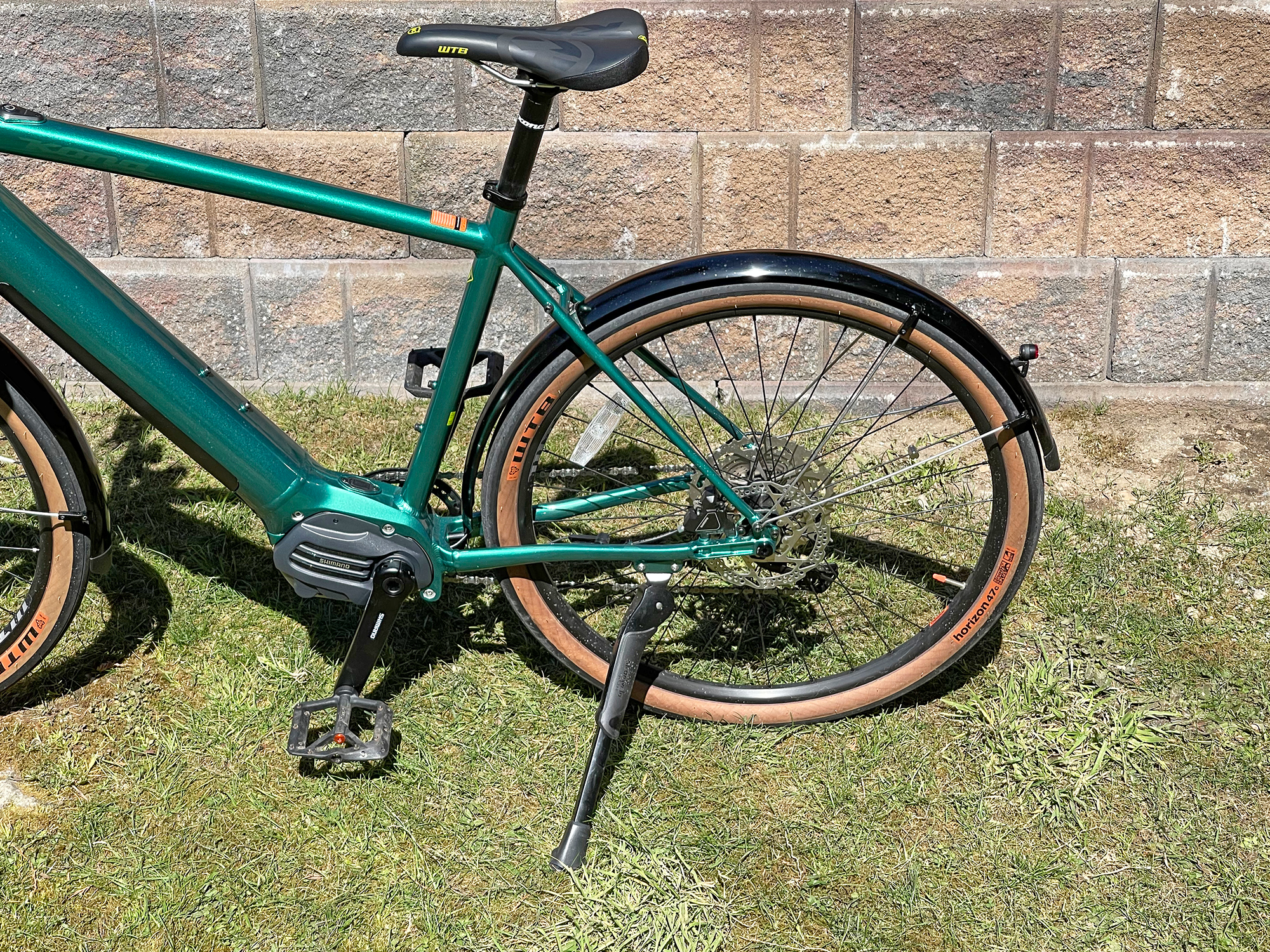
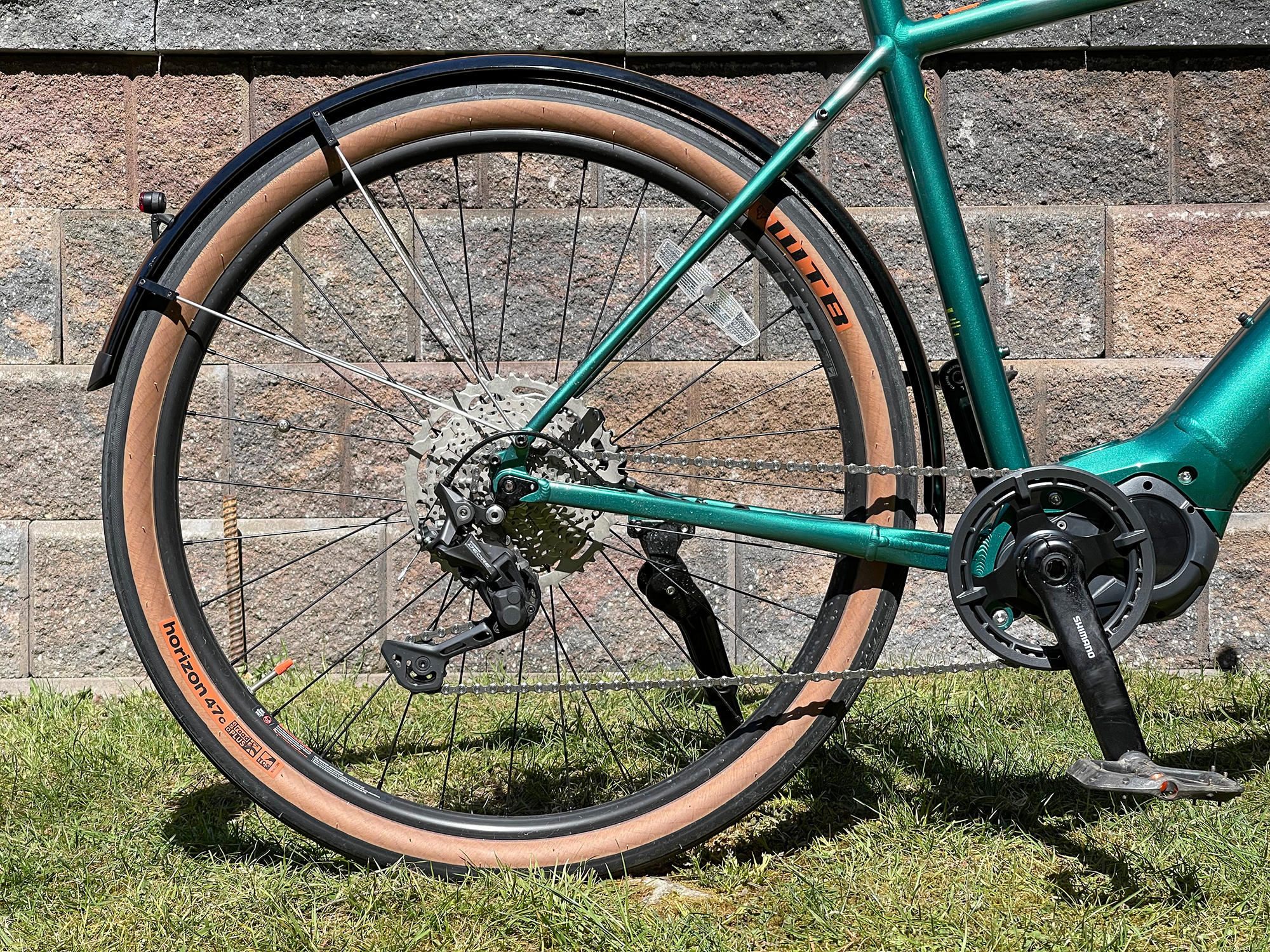
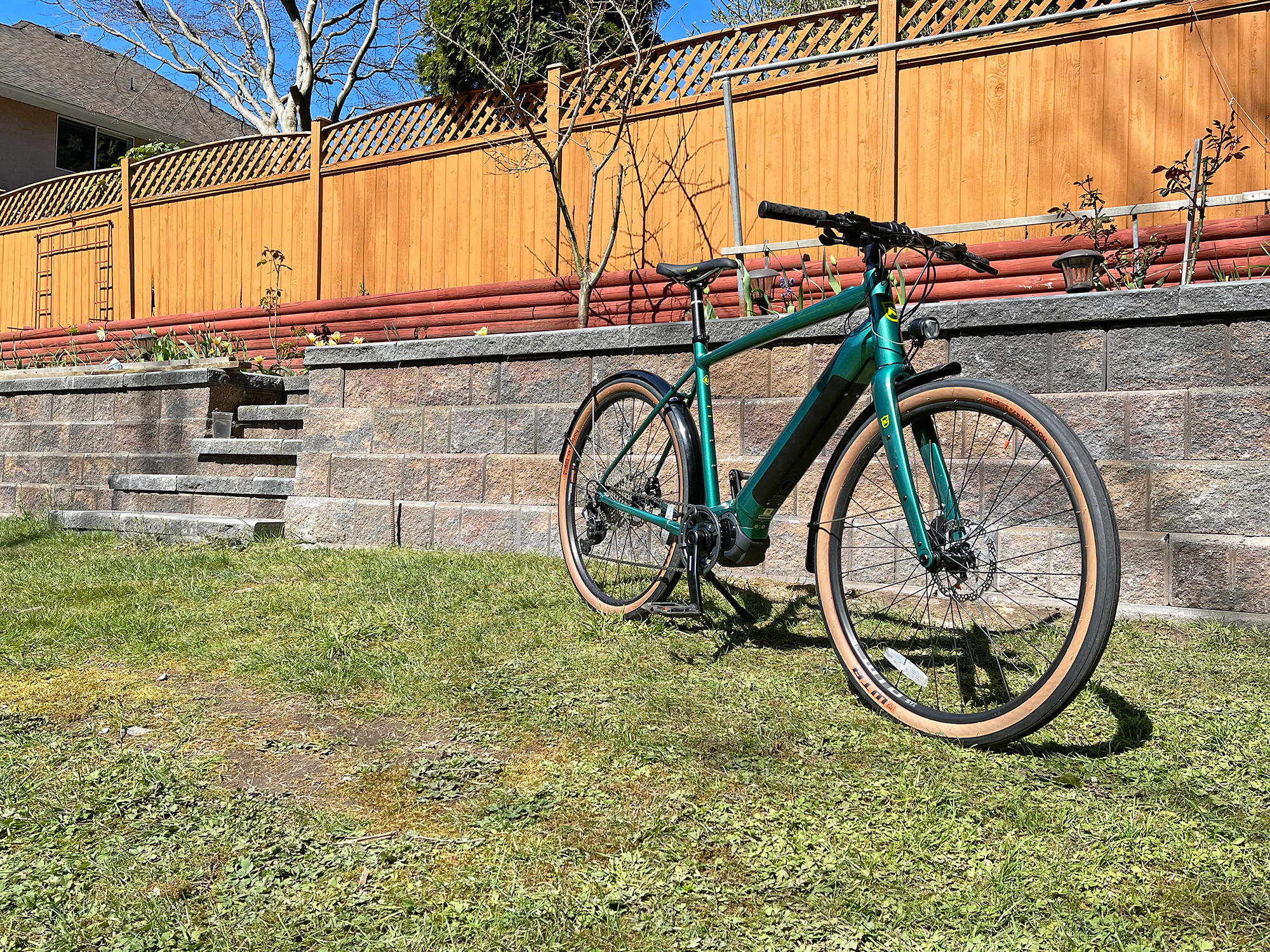
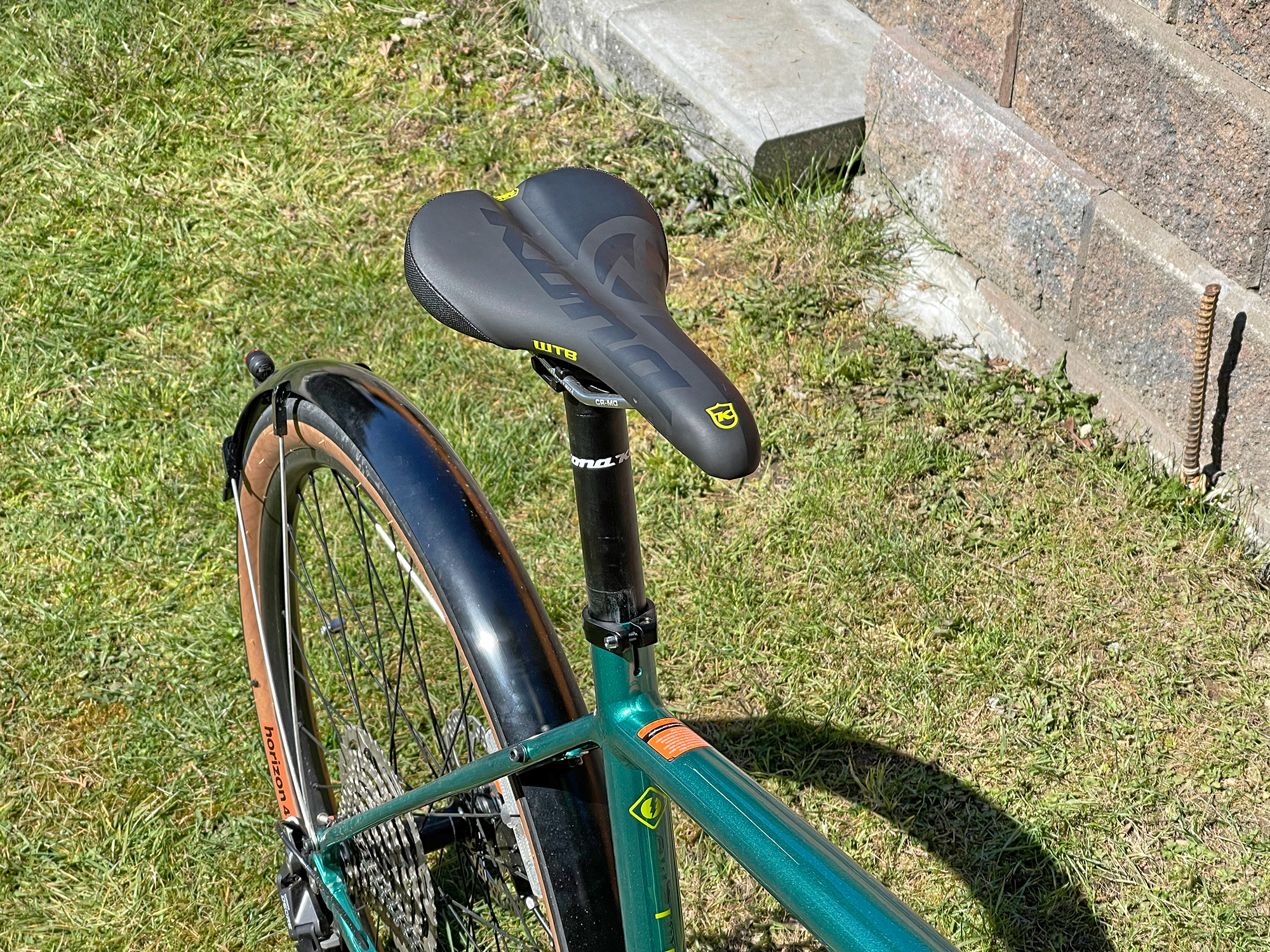


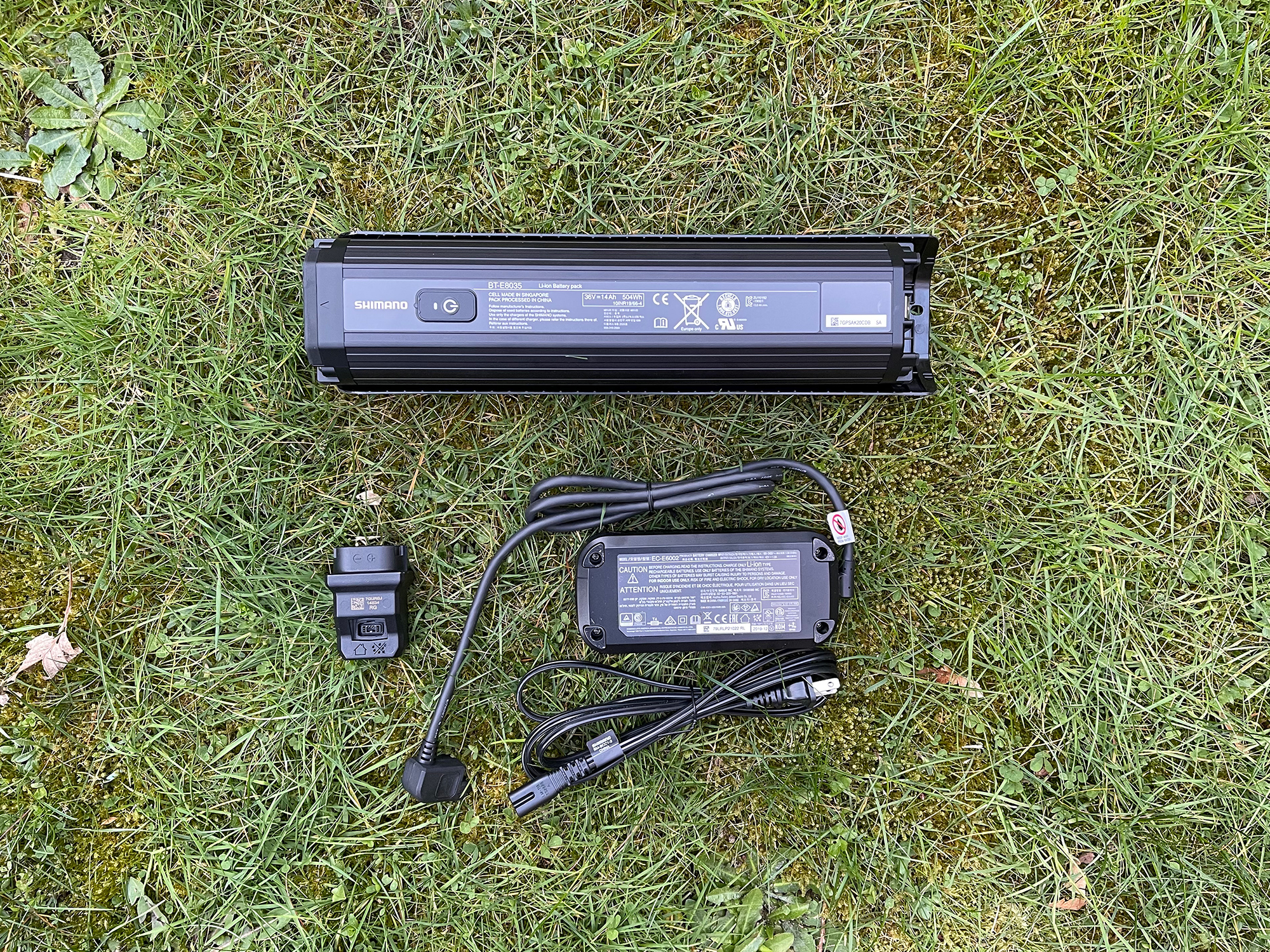
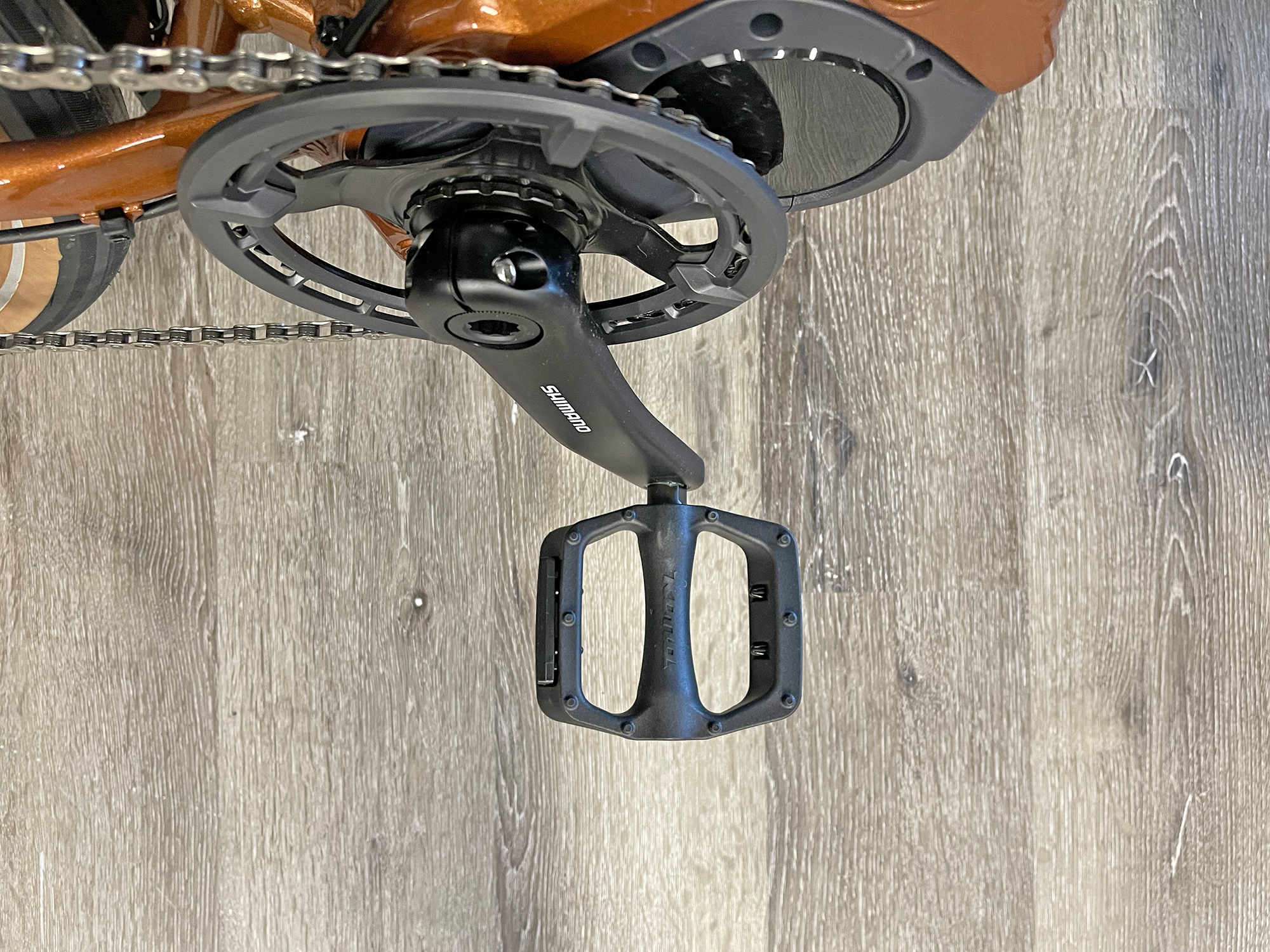

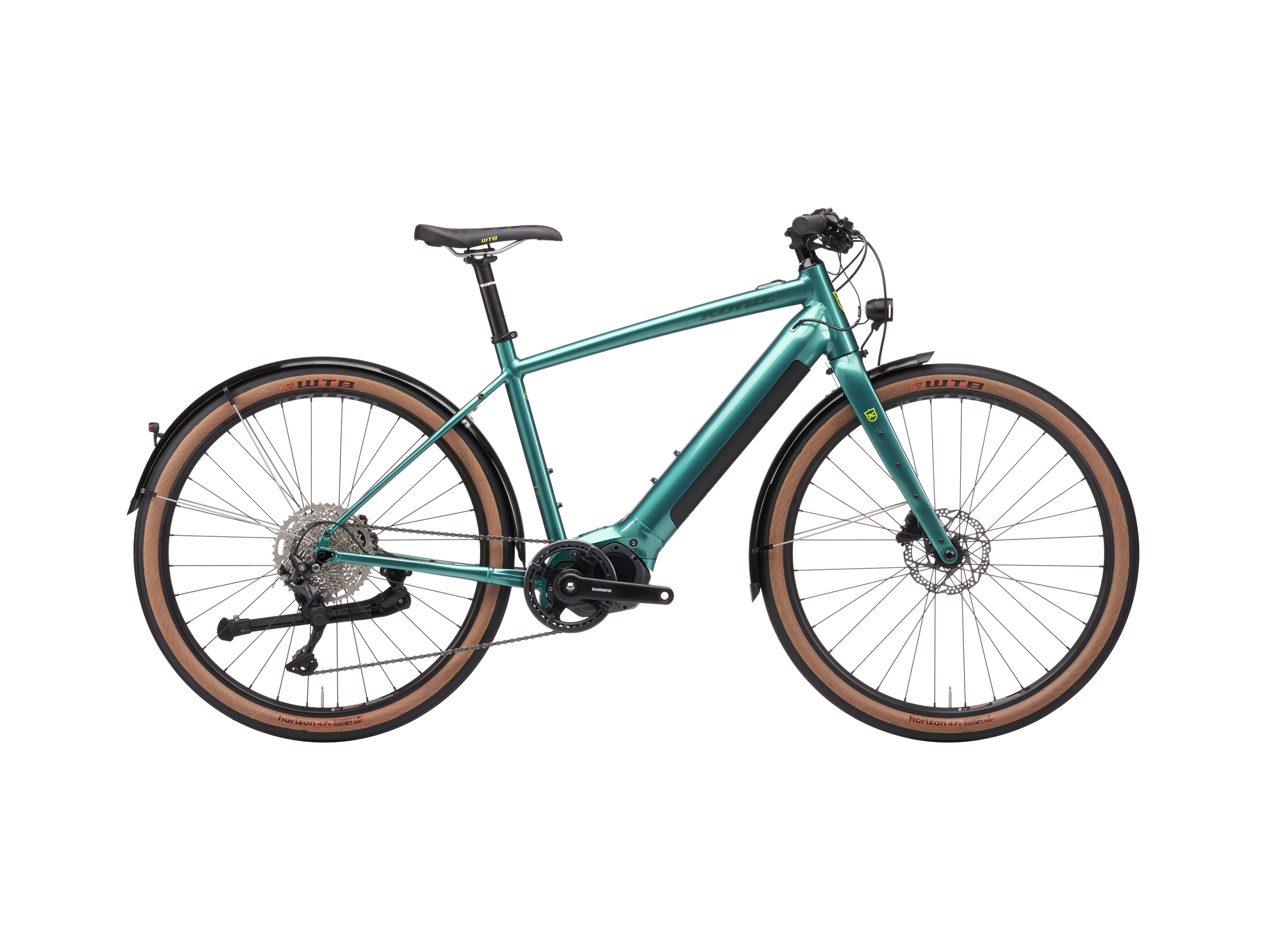

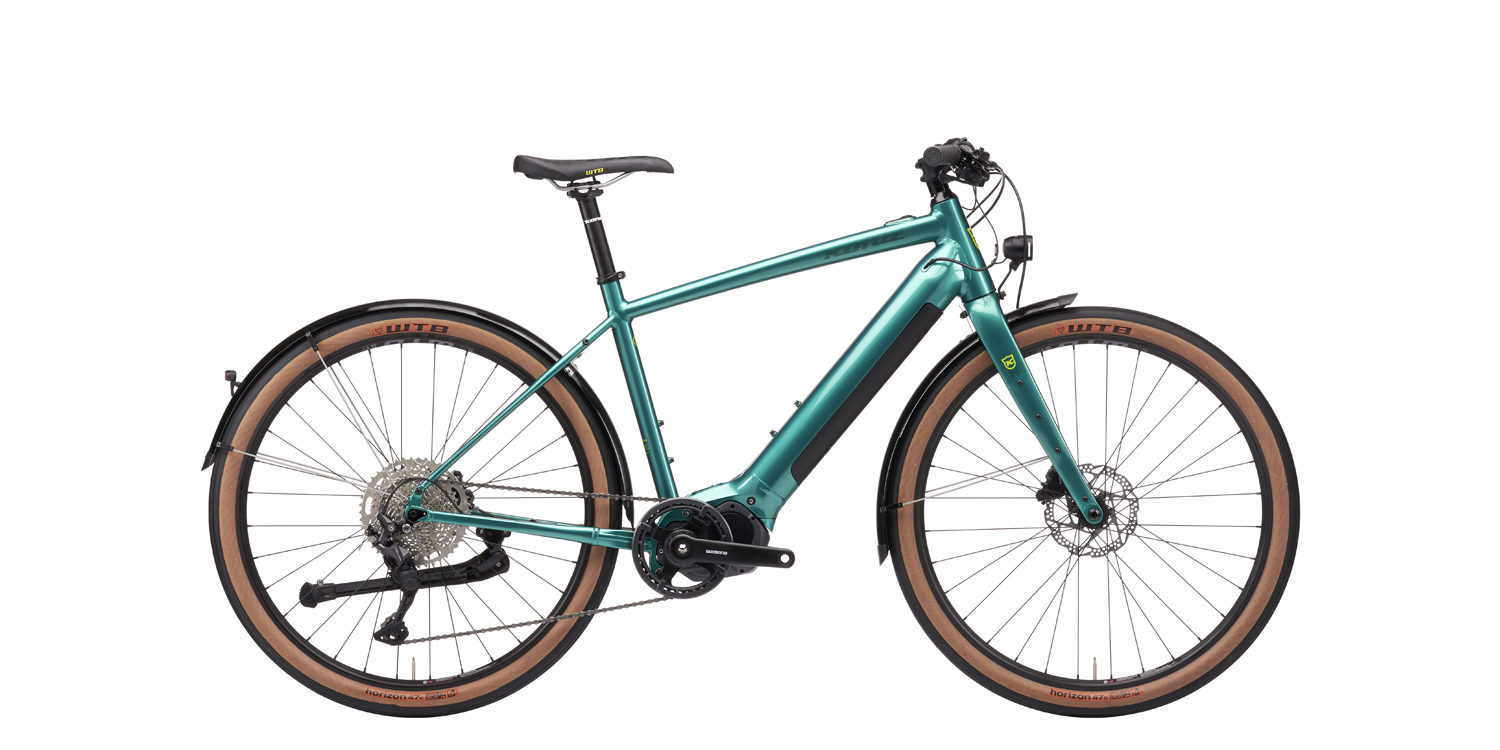
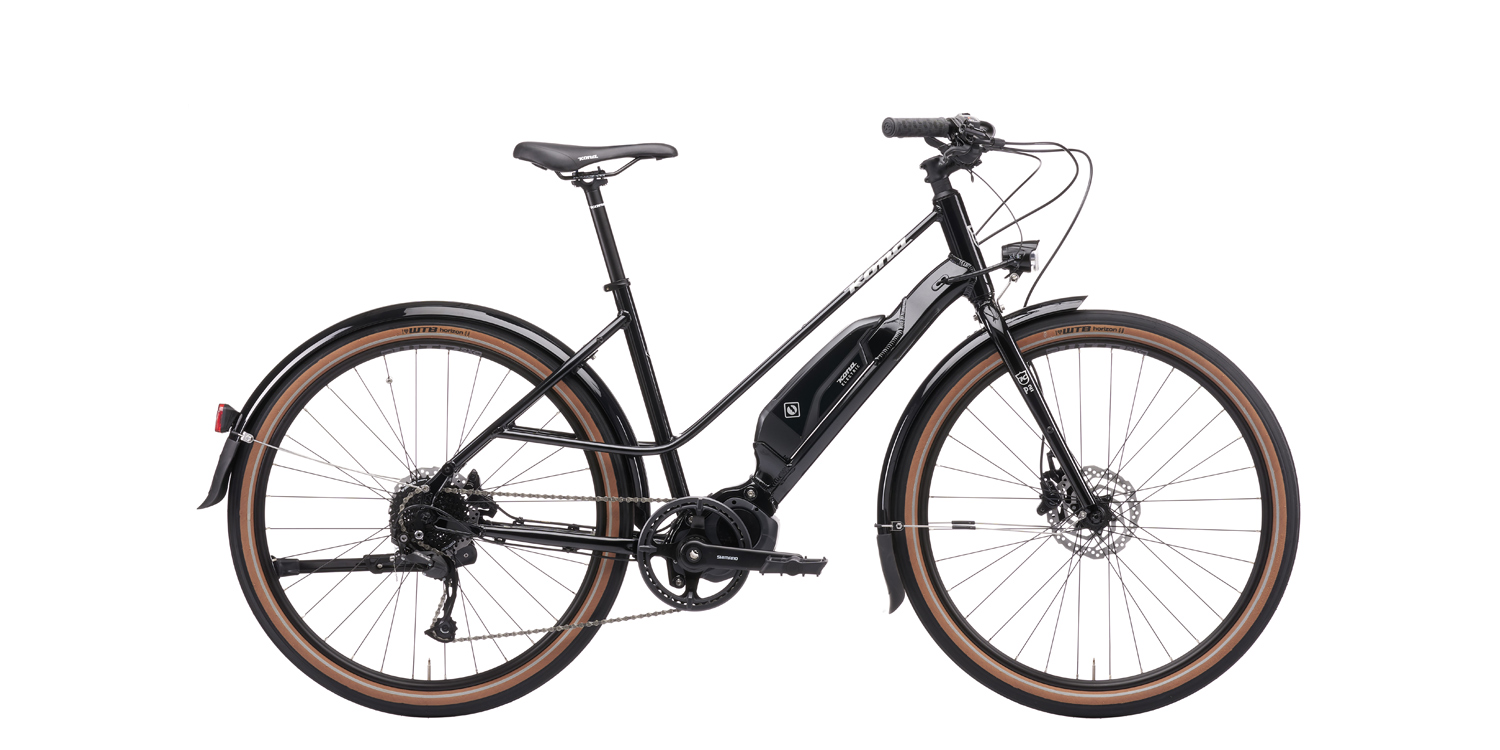
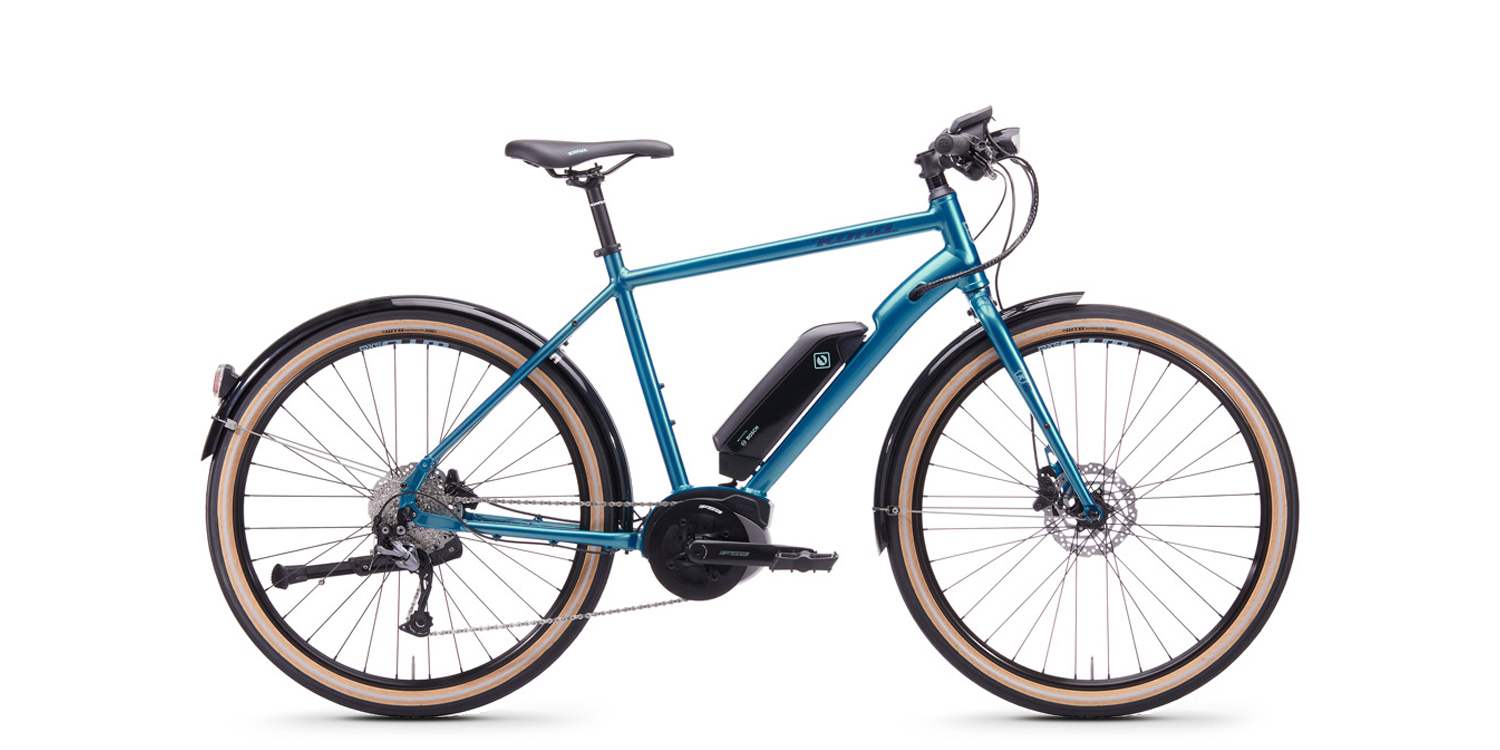
Alan Koslowski says
Great review that seems thorough and accurate. My LBS has one in stock. I agree it’s a very nice bike, but you’re right about its shortcomings. When I saw it I was also baffled it didn’t have a key-locking battery system for security and easy removal/installation. Other than that, it it’s very nice, though it does seem pricey.
I’d also like to see a class 3 version, but Kona seems to use Shimano systems exclusively now. Currently I don’t think Shimano offers a class 3 system, so who knows if or when a class 3 Dew-E might be available.
Court says
Yeah, I think you’re spot on with your assessment Alan. Shimano seems pretty traditional, and hasn’t had any Class 3 products to date (that I’m aware of). I really like Kona because they have a cool history, seem down to Earth, are easy to work with, design unique and “real” bikes… but I wish that their end product didn’t have to suffer from the design decisions and limitations of other companies. I tried to list out the advantages of the Shimano drive system (light, compact, surprisingly powerful), so I guess everything has its trade-offs. I appreciate your input!
Steve says
Any idea what the maximum useable tyre width would be?
Court says
Hi Steve! I’m hazarding a guess here, based on the photos that show the fork and front fender. It looks like the stock WTB Horizon TCS, 26″ x 1.75″ is already pretty right, so I’m guessing the bike won’t fit much larger. Since I’m not an expert on tires, I don’t know how much higher to guess. Something slightly larger than 1.75″ wide could work, but if you go too large then the fenders might have to be manually adjusted out (which appears possible with these fenders) and if you go even larger or choose tires with knobs, they could start to touch the sides of the fork. I hope this helps guide your research and considerations of different 26″ tires.
Chris says
I recently picked up my new Kona Dew-e DL and once I set the lights to “on” they come on every time I turn the bike on. I do not have to reset them to “on” every time.
Court says
Oh cool, thanks for that information Chris! It has been a while since I looked at the bike, I hope most of the other info was accurate and helpful :)
Chris says
Yes. I did a lot of comparing using your reviews and tools. All very useful. I love my bike and wouldn’t have found it without your help.
Chris says
Another very small difference between the review and my bike is that my kickstand is held on with 2 screws that use a regular Allen wrench. I found out because one screw fell out on a ride and I was about to start begging for a star wrench so the kickstand wouldn’t dangle, when I checked to be sure that was what I needed.
Though Kona lists WTB tires, mine came with Maxxis Re-fuses. Not so different but I suspect a supply chain issue. Anyway for the kind of city riding that I do, I want a little more tread but not knobbies. Not a lot of choices in this size.
Court says
Thanks for the detailed update Chris! Yeah, maybe it’s a supply chain issue with the tires. I’ve noticed variations lately from even the big companies like Giant! They were using microSHIFT components instead of SRAM as listed on their sites. I hope the bike works out well enough for you, and you can find perfect tires. I looked up the Maxxis Re-fuses and see that the tread is very minimal.
Fred says
Thanks for the review. I’m considering commuting with an Ebike. Considering the distance (18km) and the steep ride it looks like this bike could be a good match although I’m not a rider expert.
I have seen a 35% discount on this bike which would price below 3k. Considering the discount would think it is a bargain or in the meantime are there any models that are more worth?
Court says
Nice discount, Fred! Yeah, I think they’ve used an excellent drive system and battery. The bike is a classic city design with some nice accessories. There are other similar products from Trek, Giant, and Specialized… but I like the Kona brand, the style, and the reduced weight and increased efficiency of a rigid frame. Again, to me this is classic. Hope this helps, and yes I do think that it could make the 18k distance easily and would also climb well. The motor offers above average Shimano hardware that is known for being reliable, efficient, and a bit quieter than competitors.
Fred says
Just wanted to thank you for your review. I have the bike for a bit more than 2 weeks and after 150km I must say I’m super happy with it. I’m no expert there, but Ifind it super reactive and very good to handle. Where I live I often have to face steep hills and with the motor it just go through without problems. As an urban bike to commute to work it’s just perfect! On the top of it is also a really nice looking one! I have it in kind of mauv colour love it!!
Court says
Thanks Fred! I’m glad to hear you’re happy with the bike, I thought they were pretty great too :)